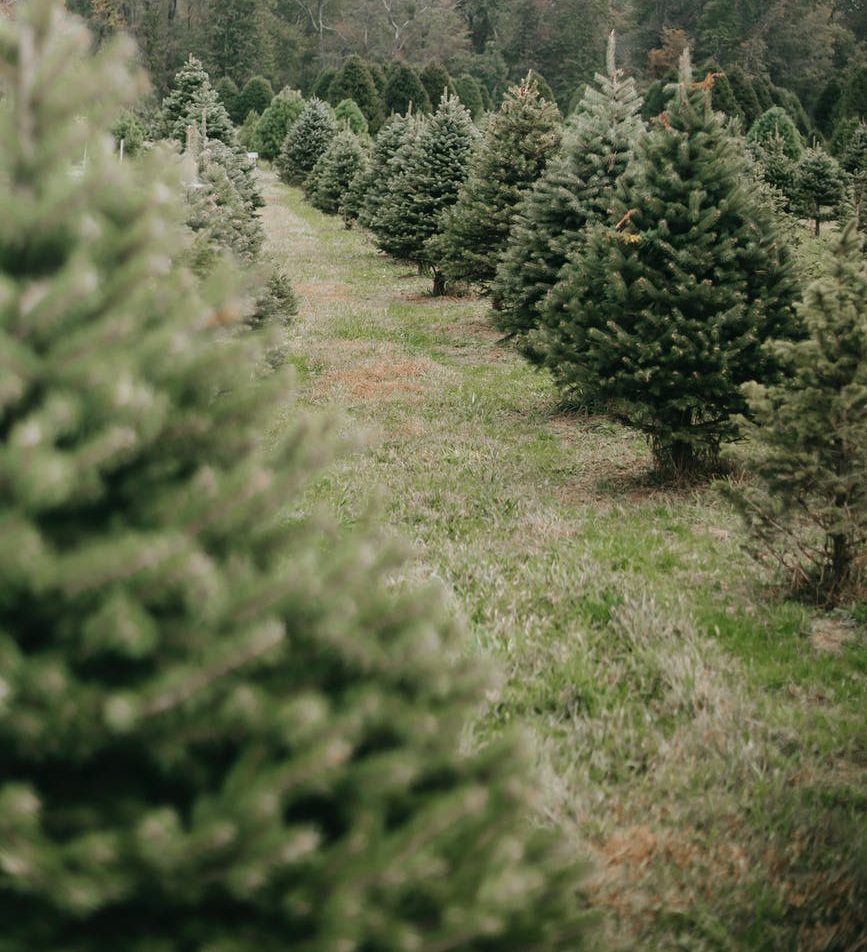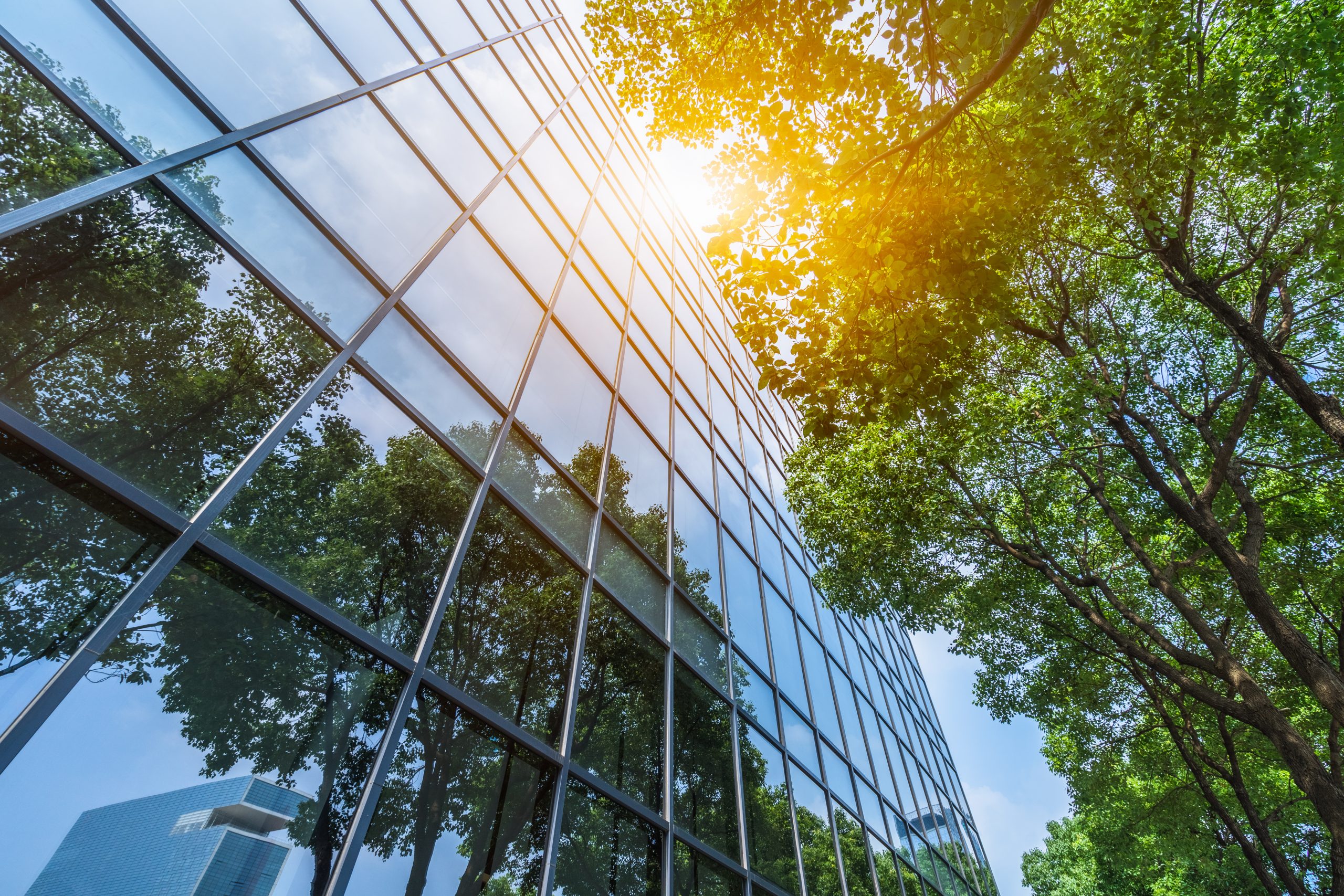It’s the most wonderful time of the year! Whether you’re spending time with family, going away or just having a well-deserved break from work, Christmas is possibly the most popular holiday of the year. However, the consumer demand surrounding the Christmas season brings a significant environmental impact. In this article, we consider how you can limit the environmental cost of your Christmas, with a more considered approach.

1. Christmas Tree Waste
The real tree versus artificial tree debate continues to keep us divided. However, with the focus on sustainability now greater than ever, it’s time to re-think our treasured traditions. Often imported from China and made from plastics, a single artificial tree has a carbon footprint of around 40kg of CO2, according to the Carbon Trust. That’s more than double that of a real tree that goes to landfill, and more than ten times that of real trees that are burnt. This means you would need to use an artificial tree for at least 10 Christmases to keep its environmental impact lower than that of a real tree. It is therefore worthwhile investing in a higher quality tree, with the intention of using it for several years.
Every year, we buy around 7 million real Christmas trees, but the environmental impact of a real tree is heavily dictated by the method of disposal. Taking a tree to a waste centre can increase CO2 levels from 3.5kg to 16kg. To keep CO2 levels to a minimum, consider your local resources. In recent years, Christmas tree recycling points have become increasingly accessible. Disposing of your tree this way means it can be used for multiple uses around your local community, including wood chippings or weed suppressant.
Another option to investigate when considering a real tree is renting. All you need to do is research a local tree farm offering the service and pick your favourite tree. When you’re ready to take down your decorations, it can be returned and planted for the following year, so you can rock around the same tree every year! There is also no need to worry about disposing of the tree yourself or contributing to landfill.
By choosing this option, the trees can continue to remove carbon dioxide from the air throughout the year, whilst providing homes for local wildlife. You will also be supporting a local business, rather than investing in large retailers.
2. Minimise Wrapping Waste
A recent survey has predicted that we will dispose of 108 million rolls of wrapping paper in the UK this Christmas. Many of us will put this waste in the recycling bin, however, consider buying wrapping paper that is already recycled for an even more sustainable consumer cycle.
A new trend hitting the retail market is the doubling up of paper bags for wrapping paper. Many clothing brands are leading the way with this, with bags from purchases easily transformed into gift wrap.
Plastic tape is another huge offender of waste around Christmas time, in fact, we get through about 40 million rolls of it annually. This unwarranted use of plastic can easily be avoided with the substitute of paper tape or Washi tape. This is fully recyclable and comes in plenty of patterns, to give your presents a sustainable makeover. Another popular alternative is the use of string, which can enable you to do away with tape altogether, while offering an attractive way of presenting your gifts.
Plain cardboard luggage tags can enable you to get creative by designing your own gift tags using stamps, calligraphy or drawings. If you have leftovers, you can use them for any occasion year-round, reducing your throw away waste. Using old greeting cards is another inventive way of making gift tags and can further save you money. If you have any left over, take them to your local card collection bank where they will be recycled for you!
One last tip…try to avoid foiled or glitter wrapping paper where you can. This isn’t recyclable and therefore needs to be put in with general waste, further contributing to landfill. Try seeded paper instead. This creates a ‘gift inside a gift’ concept, where your receiver can also be gifted a future green surprise after planting the paper.
3. Lower Energy Usage
Over the festive period, UK residents’ energy usage increases by 11%, due to the surge in lighting and electrical usage. Often Christmas is a time to relax our day-to-day rules, with lengthier TV viewing and reliance on gadgets. Perhaps instead, Christmas can be an opportunity to decrease your energy usage, rather than increase it. And with energy prices at a record high, you could also see the financial benefits as well as the environmental ones.
Our favourite shows will convince us that the Christmas special will be unmissable, but consider whether it will have your full attention on the day. With many distractions around, the TV can easily be disguised as background noise. If no one is watching, turn your TV off at the socket, rather than leaving it on standby mode, as this can use up to 15W or more, if you haven’t changed your settings to eco mode.
This also counts for gaming consoles. As an exciting present to receive, it is easy to lose track of gaming time or forget to switch the console off. Although these are becoming increasingly energy efficient; in power saving mode the PS4 uses up to 5W, but the new PS5 has reduced this to 1W.
Why not avoid the electrical usage altogether and resort to a good old fashioned board game! With zero power needed, it is a perfect opportunity to spend some quality time together, away from screens.
Meanwhile, consider what your decorations are costing you. According to research, Christmas lights cost £3.75 million to keep switched on every day in December. To minimise this environmental and costly impact, there are several different routes to venture into for a more sustainable, well-lit Christmas.
Using LED lights can give the same magical effect for 90% less energy usage. But, if you are using standard electrical lights, you can use a timer to manage and monitor your usage. It also means you don’t need to remember to turn them off, as this will be done for you! Winner, winner, Christmas dinner.
4. Considerate shopping
Consider holding back from purchasing an unnecessary amount of food over the Christmas period. In previous years we have thrown away around 7 million tons of food after Christmas. Although it is easy to get carried away, be mindful of how much you and your family will consume over the holidays and consider where you can support local shops to boost the local economy.
This choice of responsible shopping can also be reflected when buying gifts. Rather than relying on the likes of global brands, such as Amazon, which contributed 60.64 million metric tons of CO2 just last year alone, consider supporting local shops and businesses, or small independent retailers and craftspeople. Alternatively, buying experience-based gifts is another way to reduce consumption and spend some quality, fun time with friends and family.
Finally, the long-held tradition of the office Secret Santa has perhaps had its day as increasing numbers are recognising that the rush to pick a nominal present under a certain spend threshold invariably results in unwanted gifts that ultimately end up being disposed of!
5. Go meat-free or reduce consumption
An even bigger step towards a more sustainable Christmas, is going meatless! Out of the whole plate, a turkey uses the largest amount of energy to cook and has the carbon footprint of 10kg before It even reaches our homes. Although it is a big ask, it is worth considering! The food you consume can be a large contribution to your overall carbon footprint, reconsidering food which you can switch out for meat-free alternatives over Christmas will help make a difference. The change in demand over the last few years has meant that meat-free options are now readily available in many food types. If you are not ready to cut out the turkey for a nut roast, why not consider small changes you could make in your Christmas dinner to reduce the meat consumption you and your family may have over Christmas.
Why not look at getting veggie based sausages and bacon for your pigs in blankets, or looking at plant-based alternative stuffing balls to go on the side of your roast!
6. Plan Ahead & donate leftovers
As we have already mentioned, it’s easy to over indulge and buy too much at Christmas when you are hosting a large group of guests. However, food production is one of the largest causes of deforestation, meaning food waste is a massive contributor to this. To reduce your contribution to this problem over the festive period, try to plan ahead as much as you can. Are there any events you could batch cook for, then enjoy the leftovers another day? Do you really need to double the amount of sausage rolls? Could the leftovers be frozen instead of thrown away? Minimising your waste and utilising your consumption is the best way for you to stay on top of waste reduction.
On the topic of Christmas dinner, home cooking equates to 61% of food-related greenhouse gas emissions. While the oven is a necessity for parts of the Christmas dinner, it is worth remembering that it uses 2.5kWh per hour, while a microwave and pressure cooker uses half this. Try to precook what you can using these appliances to lessen your energy consumption whilst cooking Christmas dinner.
Sadly, there are many unable to afford a large Christmas spread, or even be in a warm home over Christmas who would greatly appreciate your festive leftovers. What may be considered waste to you may be a feast to somebody else. Consider how you can support your local shelter or food hall who are working over Christmas to provide less fortunate individuals and families with the Christmas they deserve.
7. Ethical search engine
Looking for little ways to help support charities or organisations who are working to support the future of the climate? There are now search engines which can be used to shop as you usually would on google or safari that invest their profits into planting new trees. By using these, any Christmas shopping you are doing online can help contribute to replanting trees to help with the climate crisis.
Ecosia – http://ecosia.org/
Each time you search the web using Ecosia, the profits are used for climate action, with at least 80% financing tree-planting projects around the world. You can easily add this search engine as an extension and track your tree planting progress!
8. Make your own decorations
Christmas decorations can be something you buy new each year because trends change, or there is a different colour scheme you want to follow. Plastic is often a big part of Christmas decorations, including glitter-covered baubles, plastic toys in crackers, and sparkly cards and gift wrap, which all adds to the waste consumption of the festive period.
However, the ultimate goal to help improve the impact we have on the planet would be to use less and recycle more. This being said, Christmas decorations are a great way to repurpose existing items into something personalised and different. To make your own Christmas decorations, you could repurpose old wrapping paper, newspaper, use pinecones you’ve picked and even dry out orange slices to add a festive scent to the tree!
9. Make your own sweet treats
Usually when the festive period comes around the increase in chocolate gift giving and indulgence increases with the demand. The production of chocolate usually involves cacao farmers clearing tropical forests to give them space to plant new trees. This method in cacao production has resulted in massive deforestation in West Africa, with an expert estimate of 70% of the country’s illegal deforestation being related to cocoa farming. Rather than buying chocolate, why not try making some of your own sweet treats at home.
And to take it a step further, making edible gift tags is another great way to incorporate sweet treats into your festive plans. This can get the children involved in some arts and crafts, whilst personalising your gifts. Gingerbread can work really well with strawberry laces to attach to the present.
10. Dress your table sustainably
When it comes to Christmas, it’s normal to love hosting your festive dinner, with a stylish table for your guests to enjoy. However, figures suggest that 30% of waste generation is generated over the Christmas period. Some retailers have taken part in trying to reduce waste through certain products, such as John Lewis putting a stop to selling Christmas Crackers which contain plastic toys. Ultimately, crackers have a huge environmental impact on the waste they are producing. Most Christmas crackers will use single-use plastics which end up in landfills or incinerated, and it is estimated that over 100 million crackers are binned after Christmas every year.
In order to have a more sustainable Christmas, why not make your own crackers at home, which could include a handmade gift, making it personalised and meaningful instead of the usual paper joke, a paper hat and a plastic toy!
11. Encourage homemade gifts
Christmas is not just about the presents you receive, it is also about spending time with your family and enjoying the festive period together. That being said, it is likely gifts will be involved every Christmas day, and this doesn’t have to stop in order to have a sustainable Christmas. One way you can start to make gifting sustainable is encouraging homemade gifts to your loved ones. Why not suggest that you all make something homemade this year, rather than sending over a Christmas list with several products from large brands.
12. Opt for natural Christmas candles
Candles are a big part of the festive period, whether they are for lighting over December, gifts or even just to enjoy a festive scent. You can help have a more sustainable Christmas by investing in natural scented candles made from natural wax rather than paraffin-based candles. Paraffin candles are derived from petroleum which is one of the biggest contributors of carbon dioxide. These types of candles contain carcinogen compounds which are toxic air pollutants which can also contribute to bad air quality when consumed.
In contrast, natural wax candles such as soy wax, beeswax, coconut wax and rapeseed wax will burn much cleaner than paraffin candles, meaning there is less soot to pollute your home with, whilst also being more sustainable. These candles reduce the impact on the planet during production, as well as not polluting the air when burning.
Merry Christmas to All!
Merry Christmas to our team, customers, suppliers and everyone, we hope you stay safe and have a well-deserved rest.









